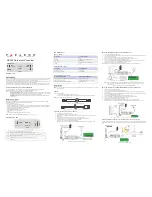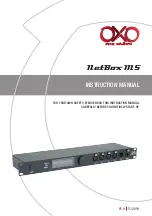
MECHANICAL INSTALLATION
Module Mounting
The LG
Electronics’ (LGE) Limited Warranty for solar mo
dules is contingent upon modules being mounted in acco
rdance with the requirements described in this section.
Any module without a frame (laminate) shall not be
considered to comply with the requirements of CSA/
UL61703 unless the module with hardware that has
been tested and evaluated with the module under this
standard or by a field inspection certifying that the
installed module complies with the requirements of
CSA/UL61730.
The solar modules are in Application Class A and have t
he Safety Class II. Therefore they can be operated in sys
tems with 120V DC and higher. General access is not re
stricted.
We recommend to use mounting device(bolt, nut, wa
sher) made by corrosion resistant material like stainl
ess steel.
Mounting
Rails
Use corrosion resistant material mounting rails and
hardware.
Use appropriate bolted connections as per
manufacturer’s instructions.
No electrical parts like cables are located after installa
tion between laminate and mounting structure.
8
Site Consideration
LGE solar modules should be mounted in a location that
meets the following requirements.
Module Operating Temperature
Temperature range : -40
°C ~ 85°C (-40°F ~ 185°F)
The operating ambient temperature of these devices
may exceed 40
℃
at full load for all wire sizes if is det
ermined suitable in the field use application.
Excluded Operating Environments
The solar modules from LG Electronics can not be op
erated in a location where they could come in direct co
ntact with salt water or ammonia.
Do not use module to replace (or partly replace) roofs
and walls of living places.
Module Strength(Basic Load) ; CSA/UL61730
Y
m
is a safety factor of 1.5
Detail of mounting distance is below.
*
This mounting method is by using frame bolt holes.
*
The mounting rails must run perpendicularly to the module
long side.
Mounting Methods
General Information
Select the appropriate orientation to maximize sunlight
exposure.
The module generates maximum output power when it
faces the sun directly. The tilt angle of the modules sho
uld be selected to optimize seasonal and sunlight
-based performance in the installation place.
Module should not be mounted or stored in a way that
the front/top glass faces downward in order to prevent
water from entering the junction box, which could caus
e a safety hazard.
Clearance between the solar module frames and stru
ctures such as roofs or ground is required to prevent
wiring damage and to allow air to circulate behind th
e solar module. The recommended standoff height is
a minimum of 100mm.
When installed on a roof, the solar module must be mo
unted over a fire-resistant roof covering rated for the a
pplication. The fire resistance of the solar module is cla
ss C after ANSI/UL790 Edition 2004.
The solar module is only IEC listed for use when its
factory frame is fully intact.
Removal or alteration must be done by an authorized
and qualified individual.
Creating additional mounting holes may damage the
solar module and reduce the strength of the frame.
We recommend a 6mm gap between module frames
to avoid tension from thermal expansion.
132Cell
(half-cut)
228mm
No. of Cell
Force
Direction
Design Load : A
Test Load :
B (B = A x
Y
m
)
132Cell
(half-cut)
Front Side
3600 Pascal
5400 Pascal
Rear Side
2650 Pascal
4000 Pascal
Shadow
LGE solar module should be installed in a proper site that
there is no shadowing affected by building,
chimney, tree, and neighboring module, etc.




































